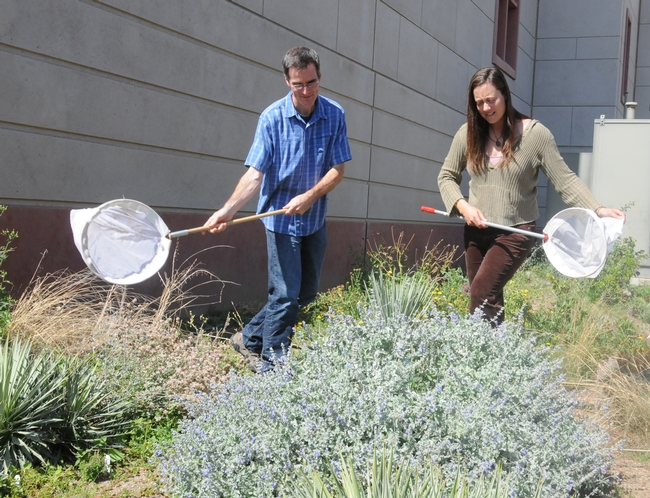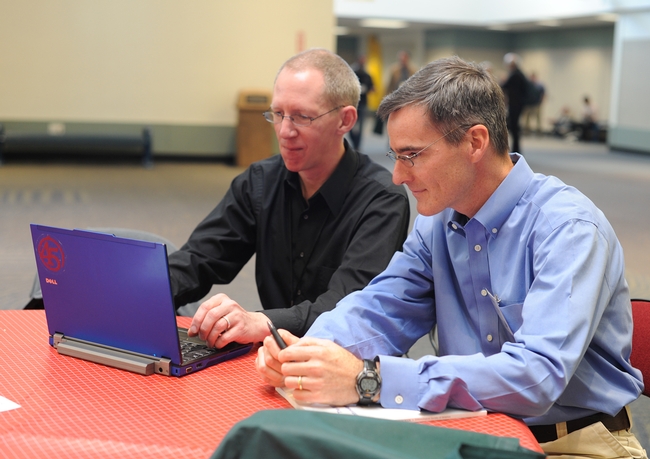
Writing for the Nature journal, Sharon Levy recently examined pollination studies that focus on the importance of pollinators and the plants they frequent.
Levy mentioned the work of conservation biologist Claire Kremen of UC Berkeley; Rachael Winfree, a pollination biologist at Rutgers University in New Brunswick, N.J.; and native pollinator specialist Neal Williams of UC Davis.
Williams led one of the studies that found that "most native bees are far less picky than was imagined," Levy wrote. The study showed that "bees collect pollen from both alien and native plants in proportion to a plant's abundance in the landscape," she related. "In highly disturbed habitats, bees make greater use of alien plants--not because the bees prefer them, but simply because introduced plants are far more common where people have transformed the landscape."
Last year Williams received a three-year federally funded research grant aimed at improving pollinator habitat plantings in nationwide agricultural settings. Williams said at the time:
“Recent declines in honey bee populations and the threat of losses in pollination service to economically important crops has raised awareness of the importance of restoring and conserving native bee diversity and abundance. We will be developing simplified assessment tools that will allow land stewards to evaluate the cost-effectiveness of future habitat restorations."
In 2000, the economic value of insect-pollinated crops in the United States was estimated at $18.9 billion.
Kremen, Winfree, Williams and Mace Vaughan, pollinator program director of the Xerces Society for Invertebrate Conservation, were among the specialists sharing their expertise at the 59th annual Entomological Society of America's meeting, held Nov. 13-16 in the Reno-Sparks Convention Center.
At one of the ESA seminars, Winfrey said that about 75 percent of the nation's crops require pollination, and that there are 20,000 species of native bees.
Kremen pointed out that "35 percent of the food we eat is pollinated by bees."
Vaughan, in emphazing the need to protect the pollinators, announced the Xerces Society's newest publication, Attracting Native Pollinators: Protecting North America's Bees and Butterflies.
To attract native pollinators, the Xerces Society says that we need to:
--Ensure pollination in our gardens, orchards or farms.
--Identify the flower-visiting insects of our region.
--Provide host plants and nesting sites for bees and butterflies.
--Create a landscape that is beautiful, diverse and pollinator friendly.
Good advice. We all have a role to fulfill in attracting and protecting the pollinators.
Attached Images:

Assistant professor Neal Williams and Kimiora Ward, research associate from the Williams lab, collect bees. (Photo by Kathy Keatley Garvey)

Neal Williams (right) and colleague Rufus Isaacs confer at the Entomological Society of America meeting Wednesday, Nov. 16 in Reno. (Photo by Kathy Keatley Garvey)